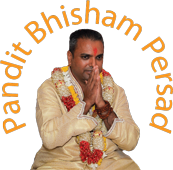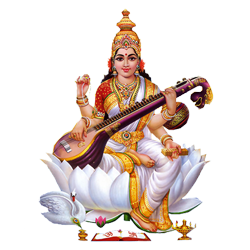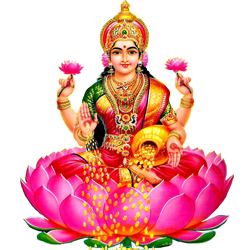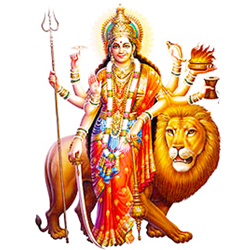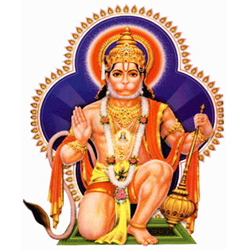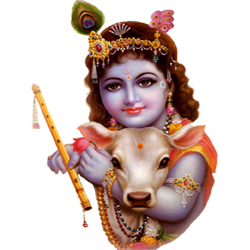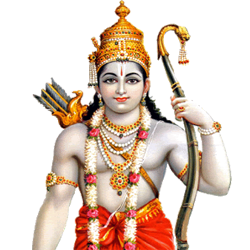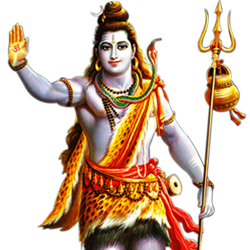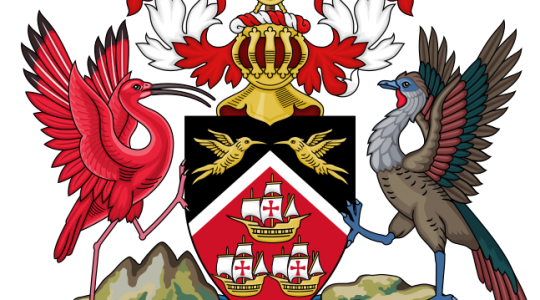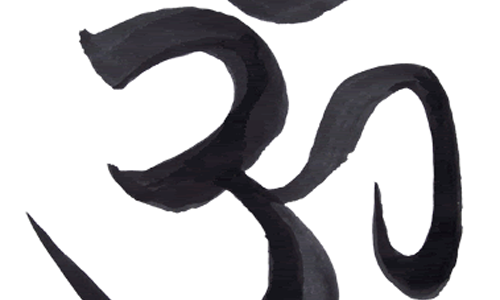- 11 years ago
-
The word guru is derived from two words, ‘Gu’ and ‘Ru’ . The Sanskrit root “Gu” means darkness or ignorance. “Ru” denotes the remover of that darkness. Therefore one who removes darkness of our ignorance is a Guru. Gurus are believed by many to be the most necessary part of lives. On this day, disciples offer puja (worship) or pay respect to their Guru (Spiritual Guide). It falls on the day of full moon, Purnima, in the month of Ashadh (June–July) of the Shaka Samvat, Indian national calendar and Hindu calendar. Traditionally the festival is celebrated by Buddhists in the honor the lord Buddha who gave His first sermon on this day at Sarnath, Uttar Pradesh, India. While Hindus celebrate it in the honour of the great sage Vyasa, who is seen as one of the greatest gurus in ancient Hindu traditions, and a symbol of the Guru-shishya tradition. Vyasa was not only believed to have been born on this day, but also to have started writing the Brahma Sutras on ashadha sudha padyami which ends on this day, hence their recitations as a dedication to him, are organised on this day, which is also known as Vyasa Purnima.
The festival is common to all spiritual traditions in Hinduism, where it is dedicated to the expression of gratitude towards the teacher by his/her disciple.[4] Hindu ascetics and wandering monks (sanyasis), observe this day by offering puja to the Guru, during the Chaturmas, a four month period during the rainy season, when they choose seclusion, and halt at one selected place; some also give discourses to the local public. Students of the Indian classical music, which also follows the Guru shishya parampara, celebrate this festival, around the world.
Hindu Legend
This was the day, when Krishna-Dwaipayana Vyasa – author of the Mahabharata – was born to sage Parashara and a fisherman’s daughter Satyavati, thus this day is also celebrated as Vyasa Purnima. Veda Vyasa, did yeoman service to the cause of Vedic studies by gathering all the Vedic hymns extant during his times, dividing them into four parts based on their use in the sacrificial rites, and teaching them to his four chief disciples – Paila, Vaisampayana, Jaimini and Sumantu. It was this dividing and editing that earned him the honorific “Vyasa” (vyas = to edit, to divide).
“He divided the Veda into four, namely Rig, Yajur, Sama and Atharva. The histories and the Puranas are said to be the fifth Veda.”
– Brahmanda Purana Vyasa Maharshi is the guru of all gurus.All prayers today to ones guru are directly reaching Vyasa.Vyasa maharshi has helped everyone to know vedas and puranas and lead life in a righteous way. Guru means one who removes darkness from ones life.
Buddhist HistoryThe Buddha went from Bodhgaya to Sarnath about 5 weeks after his enlightenment. Before Gautama (the Buddha-to-be) attained enlightenment, he gave up his austere penances and his friends, the Pañcavaggiya monks, left him and went to Isipatana (Sarnath).
After attaining Enlightenment the Buddha, leaving Uruvela, travelled to the Isipatana to join and teach them. He went to them because, using his spiritual powers, he had seen that his five former companions would be able to understand Dharma quickly. While travelling to Sarnath, Gautama Buddha had to cross the Ganges. Having no money with which to pay the ferryman, he crossed the Ganges through the air. When King Bimbisara heard of this, he abolished the toll for ascetics. When Gautama Buddha found his five former companions, he taught them, they understood and as a result they also became enlightened. At that time the Sangha, the community of the enlightened ones, was founded. The sermon Buddha gave to the five monks was his first sermon, called the Dhammacakkappavattana Sutta. It was given on the full-moon day of Asadha. Buddha subsequently also spent his first rainy season i.e. Varsha vassa at Sarnath at the Mulagandhakuti. The Sangha had grown to 60 in number (after Yasa and his friends had become monks), and Buddha sent them out in all directions to travel alone and teach the Dharma. All 60 monks were Arahants.
Observances by Buddhists and HindusBuddhists observe on this day uposatha i.e. to observe eight precepts. Vipassana meditators practice meditation on this day under the guidance of their teachers. Rainy season i.e. varsha vassa also starts with this day. During the rainy season lasting for three lunar months from July to October. During this time Buddhist monks remain in a single place, generally in their temples. In some monasteries, monks dedicate the Vassa to intensive meditation. During Vassa, many Buddhist lay people reinvigorate their spiritual training and adopt more ascetic practices, such as giving up meat, alcohol, or smoking.
A sanyasi performing Vyasa puja traditionally held on Guru Purnima day, as a part of Chaturmas ritualsThe Hindu spiritual Gurus are revered on this day by remembering their life and teachings. Vyasa Puja is held at various temples, where floral offerings and symbolic gifts are given away in his honour and that of the cosmic satguru. The festivities are usually followed by feast for the disciples, shishya, where the prasad and charnamrita literally nectar of the feet, the symbolic wash of Guru’s feet, which represents his grace, kripa is distributed.
As a day of remembrance towards all gurus, through whom God grants the grace of knowledge (Jnana) to the disciples, special recitations of the Hindu scriptures especially, the Guru Gita, a 216 verse ode to Guru, authored by the sage, Vyasa himself, are held all day; apart from singing of bhajans, hymns and organising of special kirtan session and havan at many places, where devotees from all over gather at the ashrams, matha or place where the seat of Guru, Guru Gaddi exists. This day also sees the ritual of padapuja, the worships of Guru’s sandals, which represent his holy feet and is seen a way of rededicating to all that a Guru stands for. Disciples also recommit themselves on this day, towards following their teacher’s guidance and teachings, for the coming year.
A mantra that is particularly used on this day is “Gurur Brahma, Gurur Vishnu, Gurur Devo Maheshwara, Guru Sakshat Parabrahmah Tasmai Shree Guru Veh Namah”.
This day is also seen as an occasion when fellow devotees, Guru Bhai (disciple-brother), express their solidarity to one another in their spiritual journey.
JainismAccording to Jain traditions, it was on this day, falling at the beginning of chaturmas, the four month rainy season retreat, Mahavira, the 24th Tirthankara, after attaining Kaivalya, made Indrabhuti Gautam, later known as Gautam Swami, a Ganadhara, his first disciple, thus becoming a Guru himself, therefore it is observed in Jainism as Guru Purnima, and is marked special veneration to one’s Gurus and teachers.
Author archives: Admin
- 11 years ago
-
Ganesh Chaturthi is the celebration of the birth of Ganesh.
Ganesh Chaturthi or Vinayaka Chaturthi is one of the most colorful and widely celebrated festivals in India. Large number of people observe Ganesha Chaturthi poojas at home. Here is an explanation on how to perform Ganesha puja at home as mentioned in Hindu scriptures.
Ganesha puja on the Chaturthi day is usually performed at noon but nowadays people perform it when all the family members are present.Requirements
A Clay image of Lord Ganesha.
Red flowers
Druva Grass blades
Modak (jaggery filled sweet)
Coconut
Red chandan (Sandalwood paste)
Incense and agarbathisThe Puja
First clean the house and take a bath.
A Clay image of Lord Ganesha is installed in a raised platform.
Pray to Lord Ganesh and you can recite mantras or bhajans dedicated to Lord Ganesha.
Next step is to invoke Ganesha into the image. This is known as pran-prathishta. The Pran Prathista mantra in Sanskrit to be invoked is found in the Rig Veda and is part ofGanesh Suktha
ganananh tva ganapatim havamahe kavim kavinam – upamashravastamam |
jyeshhtharajam brahmanan.h brahmanaspata A nah shrivnvannutibhih sida sadanam || (Rig Veda 2.23.1)
ni shhu sida ganapate ganeshhu tvamahurvipratamam kavinam |
na rite tvat.h kriyate kinchanare mahamarkam maghavan.h chitramarcha || (Rig Veda 10.112.9)
We invoke You, O Ganapati of the ganas (Lord Shiva attendants), Who are Brahmana-spati of the brahmas (prayers), the wisest among the wise, Who abound in treasure beyond all measure, the most brilliant one. Do listen to our prayers, come with Your blessings and assurances of protection into our home, and be seated. (Rig Veda 2.23.1)
Sit down among the worshippers, O Ganapati, the best sage among the sages. Without You nothing can be done here or far. Accept with honor, O wealthy One, our great and variegated hymns of praise. (Rig Veda 10.112.9)Now Ganesha is installed in the idol and one can perform arati and light the lamps. Some people perform the shhodashopachara, which are 16 forms of paying tribute to Ganesha. (This ritual is usually performed by the priests, you can skip this.)
Offer 21 blades of Druva Grass.
Offer 21 modakas
Offer red flowers
Apply a tilak using red Sandalwood paste.
Break the coconut or just keep it along with the idol. You can also keep fried grains. (The food of the rat – the vehicle of Ganesha).
You can also recite the 108 salutations dedicated to Lord Ganesha or read the Ganesha Upanishad or just simply pray.The number 21 signifies – the five organs of perception, five organs of action, five vital airs (pranas), five elements, and the mind.
While performing Ganesha Puja at home, you can always be flexible. The strict rituals are meant for Vedic priests. All you need to be careful is to perform the pujas with a clean body and clean mind.
What is more important is devotion not the ritual.
Try to be simple. Concentrate on your prayers not on decoration and other ritualistic details.
- 11 years ago
-
Diwali is the abbreviation of the Sanskrit word “Deepavwali”, which means “row of lights”. The festival is celebrated on the occasion of Lord Krishna and his wife Satyabhama killing a demon Narakasura. Another story says the festival is celebrated for the return of Rama and Sita to the kingdom Ayodhya after fourteen years of exile.
Diwali (also spelled Devali in certain regions) or Deepavali,[note 1] popularly known as the “festival of lights,” is a festival celebrated between mid-October and mid-November for different reasons.[1] For Hindus, Diwali is one of the most important festivals of the year and is celebrated in families by performing traditional activities together in their homes. For Jains, Diwali marks the attainment of moksha or nirvana by Mahavira in 527 BCE.[2][3]
Diwali is an official holiday in India,[4] Nepal, Sri Lanka, Myanmar, Mauritius, Guyana, Trinidad & Tobago, Suriname, Malaysia, Singapore, and Fiji.
The name “Diwali” or “Divali” is a contraction of “Deepavali” (Sanskrit: दीपावली Dīpāvalī), which translates into “row of lamps”.[5] Diwali involves the lighting of small clay lamps (dīpa in Sanskrit: दीप) filled with oil to signify the triumph of good over evil.[6] These lamps are kept on during the night and one’s house is cleaned, both done in order to make the goddess Lakshmi feel welcome.[7] Firecrackers are burst in order to drive away evil spirits.[8][9][10] During Diwali, all the celebrants wear new clothes and share sweets and snacks with family members and friends.
Diwali commemorates the return of Lord Rama, along with Sita and Lakshmana, from his 14-year-long exile and vanquishing the demon-king Ravana. In joyous celebration of the return of their king, the people of Ayodhya, the Capital of Rama, illuminated the kingdom with earthen diyas and by bursting firecrackers.[11]
-
Saraswati is the Goddess of leaming, knowledge, and wisdom. The Sanskrit word sara means “essence” and swa means “self.” Thus Saraswati means “the essence of the self.” Saraswati is represented in Hindu mythology as the divine consort of Lord Brahma, the Creator of the universe. Since knowledge is necessary for creation, Saraswati symbolizes the creative power of Brahma. Goddess Saraswati is worshipped by all persons interested in knowledge, especially students, teachers, scholars, and scientists.
In Her popular images and pictures, Goddess Saraswati is generally depicted with four arms (some pictures may show only two arms), wearing a white sari and seated on a white lotus. She holds a book and a rosary in Her rear two hands, while the front two hands are engaged in the playing of a lute (veena). Her right leg is shown slightly pushing against Her left leg. She uses a swan as Her vehicle. There is a peacock by Her side gazing at Her. This symbolism illustrates the following spiritual ideas:
The lotus is a symbol of the Supreme Reality, and a white lotus also denotes supreme knowledge. By sitting on a lotus, Saraswati signifies that She is Herself rooted in the Supreme Reality, and symbolizes supreme knowledge. The white color symbolizes purity and knowledge. The white sari that the Goddess is wearing denotes that She is the embodiment of pure knowledge.
The four amms denote Her omnipresence and omnipotence. The two front amms indicate Her activity in the physical world and the two back arms signify Her presence in the spiritual world. The four hands represent the four elements of the inner personality. The mind (manas) is represented by the front right hand, the intellect (buddhi) by the front left hand, the conditioned consciousness (chitta) by the rear left hand, and the ego (ahankara) by the rear right hand.
The left side of the body symbolizes the qualities of the heart and the right side symbolizes activities of the mind and intellect. A book in the rear left hand signifies that knowledge acquired must be used with love and kindness to promote prosperity of mankind.
The rosary signifies concentration, meditation, and contemplation, leading to samadhi, or union with God. A rosary in the rear right hand representing ego conveys that true knowledge acquired with love and devotion melts the ego and results in liberation (moksha) of the seeker from the bondage to the physical world.
The Goddess is shown playing a musical instrument that is held in Her front hands, which denote mind and intellect. This symbol conveys that the seeker must tune his mind and intellect in order to live in perfect harmony with the world. Such harmonious living enables the individual to utilize acquired knowledge for the welfare of all mankind.
Two swans are depicted on the left side of the Goddess. A swan is said to have a sensitive beak that enables it to distinguish pure milk from a mixture of milk and water. A swan, therefore, symbolizes the power of discrimination, or the ability to discriminate between right and wrong or good and bad. Saraswati uses the swan as Her carrier. This indicates that one must acquire and apply knowledge with discrimination for the good of mankind. Knowledge that is dominated by ego can destroy the world.
A peacock is sitting next to Saraswati and is anxiously waiting to serve as Her vehicle. A peacock depicts unpredictable behavior as its moods can be influenced by the changes in the weather. Saraswati is using a swan as a vehicle and not the peacock. This signifies that one should overcome fear, indecision, and fickleness in order to acquire true knowledge.
-
Lakshmi is the Goddess of wealth and prosperity, both material and spiritual. The word ”Lakshmi” is derived from the Sanskrit word Laksme, meaning “goal.” Lakshmi, therefore, represents the goal of life, which includes worldly as well as spiritual prosperity. In Hindu mythology, Goddess Lakshmi, also called Shri, is the divine spouse of Lord Vishnu and provides Him with wealth for the maintenance and preservation of the creation.
In Her images and pictures, Lakshmi is depicted in a female form with four arms and four hands. She wears red clothes with a golden lining and is standing on a lotus. She has golden coins and lotuses in her hands. Two elephants (some pictures show four) are shown next to the Goddess. This symbolism conveys the following spiritual theme:
The four arms represent the four directions in space and thus symbolize omnipresence and omnipotence of the Goddess. The red color syinbolizes activity. The golden lining (embroidery) on Her red dress denotes prosperity. The idea conveyed here is that the Goddess is always busy distributing wealth and prosperity to the devotees. The lotus seat, which Lakshmi is standing upon, signifies that while living in this world, one should enjoy its wealth, but not become obsessed with it. Such a living is analogous to a lotus that grows in water but is not wetted by water.
The four hands represent the four ends of human life: dharma (righteousness), kama (genuine desires), artha (wealth), and moksha (liberation from birth and death). The front hands represent the activity in the physical world and the back hands indicate the spiritual activities that lead to spiritual perfection.
Since the right side of the body symbolizes activity, a lotus in the back right hand conveys the idea that one must perform all duties in the world in accordance with dharma. This leads to moksha (liberation), which is symbolized by a lotus in the back left hand of Lakshmi. The golden coins falling on the ground from the front left hand of Lakshmi illustrate that She provides wealth and prosperity to Her devotees. Her front right hand is shown bestowing blessings upon the devotees.
The two elephants standing next to the Goddess symbolize the name and fame associated with worldly wealth. The idea conveyed here is that a true devotee should not earn wealth merely to acquire name and fame or only to satisfy his own material desires, but should share it with others in order to bring happiness to others in addition to himself.Some pictures show four elephants spraying water from golden vessels onto Goddess Lakshmi. The four elephants represent the four ends of human life as discussed above. The spraying of water denotes activity. The golden vessels denote wisdom and purity. The four elephants spraying water from the golden vessels on the Goddess illustrate the theme that continuous self-effort, in accordance with one’s dharma and govemed by wisdom and purity, leads to both material and spiritual prosperity.
Goddess Lakshmi is regularly worshipped in home shrines and temples by Her devotees. A special worship is offered to Her annually on the auspicious day of Diwali, with religious rituals and colorful ceremonies specifically devoted to Her.
-
Goddess Durga represents the power of the Supreme Being that preserves moral order and righteousness in the creation. The Sanskrit word Durga means a fort or a place that is protected and thus difficult to reach. Durga, also called Divine Mother, protects mankind from evil and misery by destroying evil forces such as selfishness, jealousy, prejudice, hatred, anger, and ego.
The worship of Goddess Durga is very popular among Hindus. She is also called by many other names, such as Parvati, Ambika, and Kali In the form of Parvati, She is known as the divine spouse of Lord Shiva and is the mother of Her two sons, Ganesha and Karttikeya, and daughter Jyoti. There are many temples dedicated to Durga’s worship in India.In Her images, Goddess Durga is shown in a female form, wearing red clothes. She has eighteen arms, carrying many objects in Her hands. The red color symbolizes action and the red clothes signify that She is always busy destroying evil and protecting mankind from pain and suffering caused by evil forces. Following is the symbolism associated with Goddess Durga:
A tiger symbolizes unlimited power. Durga riding a tiger indicates that She possesses unlimited power and uses it to protect virtue and destroy evil. The eighteen arms of Durga signify that She possesses combined power of the nine incarnations of Lord Vishnu that have appeared on the earth at different times in the past. The tenth incarnation, the Kalkin (a man on a white horse), is still to come. Thus, Goddess Durga represents a united front of all Divine forces against the negative forces of evil and wickedness.
The sound that emanates from a conch is the sound of the sacred syllable AUM, which is said to be the sound of creation. A conch in one of the Goddess’s hands signifies the ultimate victory of virtue over evil and righteousness over unrighteousness.
Other weapons in the hands of Durga such as a mace, sword, disc, arrow, and trident convey the idea that one weapon cannot destroy all different kinds of enemies. Different weapons must be used to fight enemies depending upon the circumstances. For example, selfishness must be destroyed by detachment, jealousy by desirelessness, prejudice by self-knowledge, and ego by discrimination.
-
Hanuman, the great monkey hero, also called Maruti, assists Rama in his battle with Ravana to rescue Sita, who had been kidnapped by Ravana. Hanuman symbolizes the qualities of an ideal devotee of God, which can be represented by the letters of his name, as follows:
H = Humility and hopefulness (optimism)
A = Admiration (truthfulness, devotion)
N = Nobility (sincerity, loyalty, modesty)
U = Understanding (knowledge)
M = Mastery over ego (kindness, compassion)
A = Achievements (strength)
N = Nishkama-karma (selfless work in service of God)After his coronation, following victory in the battle with Ravana, Rama distributed gifts to all those who had assisted him in his battle with Ravana. Turning towards Hanuman, Rama said, “There is nothing I can give you that would match the service you have rendered to me. All I can do is to give you my own self.” Upon hearing these words, Hanuman stood by Rama, in all humility, with hands joined together in front of his (Hanuman’s) mouth, and head slightly bent in the pose of service for Rama. To this day, this picture of Hanuman, as a humble devotee of the Lord, is the most popular among the admirers and worshippers of Hanuman.
The worship of Hanuman, therefore, symbolizes the worship of the Supreme Lord, for acquiring knowledge, physical and mental strength, truthfulness, sincerity, selflessness, humility, loyalty, and profound devotion to the Lord
-
Lord Krishna is the eighth and the most popular incarnation of Lord Vishnu. He was born in approximately 3200 BCE in Vrindavan, where he was brought up by the cowherd family of Yashoda and Nanda. His childhood playmates were gopas (cowherd boys) and gopis (cowherd girls), who were greatly devoted to him. Of all gopis, Radha loved Krishna the most.
In the forests of Vrindavan, Krishna often played his flute and gopis danced with him in ecstasy. The Gopis represent the individual souls trapped in physical bodies. Radha symbolizes the individual soul that is awakened to the love of God and is absorbed in such love. The sound of Krishna’s flute represents the call of the divine for the individual souls.
The gopis’ love for Krishna signifies the eternal bond between the individual soul and God. The dance of the gopis and Krishna (Rasa Lila) signifies the union of the human and Divine, the dance of the souls. In the forest, the gopis dance with Krishna and are absorbed in their love for him. This illustrates that when an individual soul responds to the call of the Divine, the soul enjoys union with the Lord and becomes absorbed in the divine ecstasy.
Of all the incarnations, Lord Krishna is revered as a full and complete incamation (purna avatara) of Lord Vishnu. He commands love, respect, and adoration from all Hindus of all walks of life.
-
Lord Rama is the seventh incarnation of Lord Vishnu. The worship of Lord Rama is very popular among all Hindus, as is evident by the numerous temples dedicated to him in India. In the temple images, Rama is usually shown with his faithful wife Sita, devoted brother Lakshmana, and his beloved devotee Hanuman. The life story of Rama and the main purpose of his incarnation (to destroy the demon king Ravana) is described in the great epic Ramayana. A study of the epic Ramayana reveals the following theme:
Rama represents an ideal man, as conceived by the Hindu mind. In the story of Ramayana, Rama’s personality depicts him as the perfect son, devoted brother, true husband, trusted friend, ideal king, and a noble adversary. In images and pictures, Rama is shown carrying a bow and arrow. The bow and arrow convey that Rama is always ready to destroy evil and protect righteousness. He is himself an embodiment of dharma.
Sita symbolizes an ideal daughter, wife, mother, and queen. Whereas Rama symbolizes standards of perfection that can be conceived in all the facets of a man’s life, Mother Sita represents all that is great and noble in womanhood. She is revered as an incarnation of Goddess Lakshmi, the divine consort of Lord Vishnu.
Lakshmana symbolizes the ideal of sacrifice. He leaves his young wife behind in the palace and chooses to accompany his brother (Rama) in exile. He sacrifices the amenities of his personal life to serve his elder brother.
-
Lord Shiva represents the aspect of the Supreme Being (Brahman of the Upanishads) that continuously dissolves to recreate in the cyclic process of creation, preservation, dissolution and recreation of the universe. As stated earlier, Lord Shiva is the third member of the Hindu Trinity, the other two being Lord Brahma and Lord Vishnu.
Owing to His cosmic activity of dissolution and recreation, the words destroyer and destruction have been erroneously associated with Lord Shiva. This difficulty arises when people fail to grasp the true significance of His cosmic role. The creation sustains itself by a delicate balance between the opposing forces of good and evil. When this balance is disturbed and sustenance of life becomes impossible, Lord Shiva dissolves the universe for creation of the next cycle so that the unliberated souls will have another opportunity to liberate themselves from bondage with the physical world. Thus, Lord Shiva protects the souls from pain and suffering that would be caused by a dysfunctional universe. In analogous cyclic processes, winter is essential for spring to appear and the night is necessary for the morning to follow. To further illustrate, a goldsmith does not destroy gold when he melts old irreparable golden jewelry to create beautiful new ornaments.
Lord Shiva is the Lord of mercy and compassion. He protects devotees from evil forces such as lust, greed, and anger. He grants boons, bestows grace and awakens wisdom in His devotees. The symbolism discussed below includes major symbols that are common to all pictures and images of Shiva venerated by Hindus. Since the tasks of Lord Shiva are numerous, He cannot be symbolized in one form. For this reason the images of Shiva vary significantly in their symbolism.
The unclad body covered with ashes: the unclad body symbolizes the transcendental aspect of the Lord. Since most things reduce to ashes when burned, ashes symbolize the physical universe. The ashes on the unclad body of the Lord signify that Shiva is the source of the entire universe which emanates from Him, but He transcends the physical phenomena and is not affected by it.
Matted locks: Lord Shiva is the Master of yoga. The three matted locks on the head of the Lord convey the idea that integration of the physical, mental and spiritual energies is the ideal of yoga.
Ganga: Ganga (river Ganges) is associated with Hindu mythology and is the most sacred river of Hindus. According to tradition, one who bathes in Ganga (revered as Mother Ganga) in accordance with traditional rites and ceremonies on religious occasions in combination with certain astrological events, is freed from sin and attains knowledge, purity and peace. Ganga, symbolically represented on the head of the Lord by a female (Mother Ganga) with a jet of water emanating from her mouth and falling on the ground, signifies that the Lord destroys sin, removes ignorance, and bestows knowledge, purity and peace on the devotees.
The crescent moon: is shown on the side of the Lord’s head as an ornament, and not as an integral part of His countenance. The waxing and waning phenomenon of the moon symbolizes the time cycle through which creation evolves from the beginning to the end. Since the Lord is the Eternal Reality, He is beyond time. Thus, the crescent moon is only one of His ornaments, and not an integral part of Him.
Three eyes: Lord Shiva, also called Tryambaka Deva (literally, “three-eyed Lord”), is depicted as having three eyes: the sun is His right eye, the moon the left eye and fire the third eye. The two eyes on the right and left indicate His activity in the physical world. The third eye in the center of the forehead symbolizes spiritual knowledge and power, and is thus called the eye of wisdom or knowledge. Like fire, the powerful gaze of Shiva’s third eye annihilates evil, and thus the evil-doers fear His third eye.
Half-open eyes: when the Lord opens His eyes, a new cycle of creation emerges and when He closes them, the universe dissolves for creation of the next cycle. The half-open eyes convey the idea that creation is going through cyclic process, with no beginning and no end. Lord Shiva is the Master of Yoga, as He uses His yogic power to project the universe from Himself. The half-open eyes also symbolize His yogic posture.
Kundalas (two ear rings): two Kundalas, Alakshya (meaning “which cannot be shown by any sign”) and Niranjan (meaning “which cannot be seen by mortal eyes”) in the ears of the Lord signify that He is beyond ordinary perception. Since the kundala in the left ear of the Lord is of the type used by women and the one in His right ear is of the type used by men, these Kundalas also symbolize the Shiva and Shakti (male and female) principle of creation.
Snake around the neck: sages have used snakes to symbolize the yogic power of Lord Shiva with which He dissolves and recreates the universe. Like a yogi, a snake hoards nothing, carries nothing, builds nothing, lives on air alone for a long time, and lives in mountains and forests. The venom of a snake, therefore, symbolizes the yogic power.
A snake (Vasuki Naga): is shown curled three times around the neck of the Lord and is looking towards His right side. The three coils of the snake symbolize the past, present and future – time in cycles. The Lord wearing the curled snake like an ornament signifies that creation proceeds in cycles and is time dependent, but the Lord Himself transcends time. The right side of the body symbolizes the human activities based upon knowledge, reason and logic. The snake looking towards the right side of the Lord signifies that the Lord’s eternal laws of reason and justice preserve natural order in the universe.
Rudraksha necklace: Rudra is another name of Shiva. Rudra also means “strict or uncompromising” and aksha means “eye.” Rudraksha necklace worn by the Lord illustrates that He uses His cosmic laws firmly – without compromise – to maintain law and order in the universe. The necklace has 108 beads which symbolize the elements used in the creation of the world.
Varda Mudra: the Lord’s right hand is shown in a boon- bestowing and blessing pose. As stated earlier, Lord Shiva annihilates evil, grants boons, bestows grace, destroys ignorance, and awakens wisdom in His devotees.Trident (Trisula): a three-pronged trident shown adjacent to the Lord symbolizes His three fundamental powers (shakti) of will (iccha), action (kriya) and knowledge (jnana). The trident also symbolizes the Lord’s power to destroy evil and ignorance.
Damaru (drum): a small drum with two sides separated from each other by a thin neck-like structure symbolizes the two utterly dissimilar states of existence, unmanifest and manifest. When a damaru is vibrated, it produces dissimilar sounds which are fused together by resonance to create one sound. The sound thus produced symbolizes Nada, the cosmic sound of AUM, which can be heard during deep meditation. According to Hindu scriptures, Nada is the source of creation.Kamandalu: a water pot (Kamandalu) made from a dry pumpkin contains nectar and is shown on the ground next to Shiva. The process of making Kamandalu has deep spiritual significance. A ripe pumpkin is plucked from a plant, its fruit is removed and the shell is cleaned for containing the nectar. In the same way, an individual must break away from attachment to the physical world and clean his inner self of egoistic desires in order to experience the bliss of the Self, symbolized by the nectar in the Kamandalu.
Nandi: the bull is associated with Shiva and is said to be His vehicle. The bull symbolizes both power and ignorance. Lord Shiva’s use of the bull as a vehicle conveys the idea that He removes ignorance and bestows power of wisdom on His devotees. The bull is called Vrisha in Sanskrit. Vrisha also means dharma (righteousness). Thus a bull shown next to Shiva also indicates that He is the etemal companion of righteousness.
Tiger skin: a tiger skin symbolizes potential energy. Lord Shiva, sitting on or wearing a tiger skin, illustrates the idea that He is the source of the creative energy that remains in potential form during the dissolution state of the universe. Of His own Divine Will, the Lord activates the potential form of the creative energy to project the universe in endless cycles.
Cremation ground: Shiva sitting in the cremation ground signifies that He is the controller of death in the physical world. Since birth and death are cyclic, controlling one implies controlling the other. Thus, Lord Shiva is revered as the ultimate controller of birth and death in the phenomenal world.
- 11 years ago
-
FOR IMMEDIATE RELEASE
October 24th, 2007
No. of pages: 1
Media Contact: Nyasha Yorke – 202-467-6490l extension 1022Washington DC: The Embassy of the Republic of Trinidad and Tobago, Washington, D.C., on October 18, 2007, was the venue of a reception hosted by Her Excellency Marina A. Valère, in partnership with the religious head of the Trinidad and Tobago Hindu community in Washington, D.C., Pandit Bhisham Persad, to mark this year’s observance of the Hindu Festival of Lights – Deepavali. Special invitees included His Excellency Ranendra Sen, Ambassador of India to the United States and his spouse, Mrs. Kalpana Sen, CARICOM Ambassadors and their spouses, other members of the Diplomatic Corps, a wide cross-section of the Trinidad and Tobago Hindu community and Executive Members of the Trinidad and Tobago Associations of Washington, D.C. and Baltimore.
The evening’s programme which started with opening prayers led by Pandit Persad, included a special address to the gathering by the Ambassador, remarks by Pandit Persad and his spouse, Mrs. Babita Persad, the singing of Bhajans, a cultural presentation and a buffet-style vegetarian fare of a variety of Indian delicacies. In her address, the Ambassador warmly welcomed all in attendance and spoke of the significance of the festival in the Hindu calendar of religious celebrations and its equally significant place in Trinidad and Tobago calendar of religious events.
Embassy of the Republic of Trinidad and Tobago –
1708 Massachusetts Avenue, Washington DC, 20036Tel: 202-467-6490 Fax: 202-785-3130 Contact Us
EMBASSY OF THE REPUBLIC OF TRINIDAD AND TOBAGO
FOR IMMEDIATE RELEASE
October 24th, 2007
No. of pages: 1
Media Contact: Nyasha Yorke – 202-467-6490l extension 1022NEWS RELEASE
TRINIDAD AND TOBAGO’S AMBASSADOR, WASHINGTON, D.C., HOSTS RECEPTION TO MARK THE RELIGIOUS FESTIVAL OF DIVALI
Washington DC: The Embassy of the Republic of Trinidad and Tobago, Washington, D.C., on October 18, 2007, was the venue of a reception hosted by Her Excellency Marina A. Valère, in partnership with the religious head of the Trinidad and Tobago Hindu community in Washington, D.C., Pandit Bhisham Persad, to mark this year’s observance of the Hindu Festival of Lights – Deepavali. Special invitees included His Excellency Ranendra Sen, Ambassador of India to the United States and his spouse, Mrs. Kalpana Sen,
- 11 years ago
-
The moral and ethical ordinances in other religions are applicable to all their followers. In Hinduism too there is a code of conduct meant for all varnas and all jatis. But in addition to this, there are separate dharmas for jatis with different vocations. There is no intermingling of these vocations and their corresponding dharmas. This fact is central to Hinduism and to its eternal character. This religion has flourished for countless eons. What is the reason for its extraordinarily long history. If Hinduism has survived so long it must be due to some quality unique to it, something that gives it support and keeps it going. No other religion is known to have lasted so long. When I think of our religion I am reminded of our temples. They are not kept as clean as churches or mosques. The latter are frequently whitewashed. There are so many plants sprouting from the gopurams and our temples support all of them. The places of worship of other religions have to be repaired every two or three years. Our sanctuaries are different because they are built of granite. Their foundations, laid thousands of years ago, still remain sturdy. That is why our temples have lasted so long without the need for frequent repair. We do so much to damage them and are even guilty of acts of sacrilege against them, but they withstand all the abuses. All are agreed that India has the most ancient temples. People come from abroad to take photographs of them. These temples still stand as great monuments to our civilization in spite of our neglect of them and our indifference. It is not easy to pull them down. Perhaps it is more difficult to demolish these edifices than it must have been to build them. Our religion to repeat is like these temples. It is being supported by something that we do not seem to know, something that is not present in other faiths. It is because of this “something” that in spite of all the differences, it is still alive. This something is varnasrama dharma. In other religions there is a common dharma for all and we think that that is the reason for their greatness. These religions seem to touch the heights of glory at one time but at other times they are laid low. Christianity supplanted Buddhism in some countries. Islam replaced Christianity or Christianity replaced Islam. We know these developments as historical facts. The civilizations and religions that evolved in ancient Greece and China no longer exist today. Hinduism is the witness to all such changes in other religions and it is subject to attacks from inside and outside. Yet it lives-it refuses to die. There was a palm-tree round which a creeper entwined itself. The creeper grew fast and within months it entwined the entire tree. “This palm has not grown a bit all these months”, the creeper said laughing. The palm-tree retorted: “I have seen ten thousand creepers in my life. Each creeper before you said the same thing as you have now said. I don’t know what to say to you.” Our religion is like tree in relations to all other faiths. Although there are separate duties and religious rites for the different castes in our religion, the fruit of the rites are same for all.
